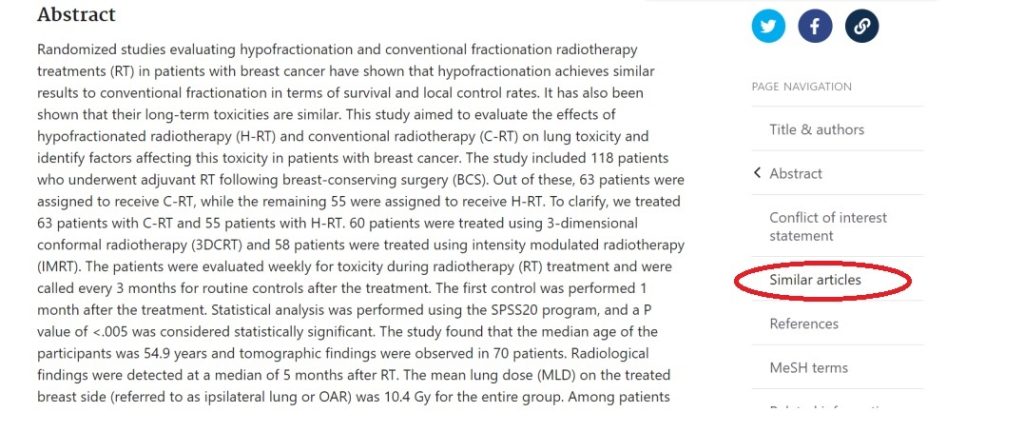The Similar articles feature is one of many built-in tools that PubMed offers for finding references. This tool works by using a specific article as a starting point, and using it’s own internal algorithm identifies articles that are similar to the original article within PubMed. The similar articles tool is especially helpful if you cannot find a sufficient number of relevant references by conducting a regular search in PubMed.
Similar articles to a specific article can be located by scrolling down the record (it’s found directly underneath the abstract and conflict of interest statement), or you jump directly to the section of the page for Similar articles found in Page Navigation on the right-hand column of the record.

Under the Similar articles heading you will see several references listed and you will find the rest of references when clicking See all similar articles beneath. The number of references found this way typically is manageable, not overly large.
As was mentioned above, there is an underlying algorithm that determines what Similar Articles search finds, i.e. determines the criteria for the relevance of these references to the one you’ve used to find them.
It is possible that what the algorithm determined was important to focus on from the initial article to retrieve similar citations is not the part of reason you selected the article as relevant. You may see a mix of references that match the topic of your initial reference very closely and the ones that are less relevant but still related. The default sorting order of this search results is always Best Match, with most relevant (as determined by the search algorithm) on the top but you may find very relevant references down the list of search results as well.
Just as you would in a traditional PubMed search, within the Similar Articles portion you can adjust the results by changing the sorting order or using the filters found on the left-hand pane – with some caution. You can also click on Advanced under the search box and use the Search Builder and History and Search Details to combine your Similar articles search (expressed as Similar articles for PMID number of an original article) with other searches or build on it.

NOTE: it is most important to remember is that in most cases, for best results, Similar Articles search should be complementary to a regular PubMed search and not the main method of searching.
